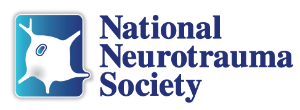Main Menu
Description & Objectives PL05
PL05: ADVANCES, CHALLENGES AND OPPORTUNITIES IN
CNS REGENERATION







Chair: Xiao-Ming Xu, PhD
PL05.01 - Gene Silencing Strategies for Studying Functional Neural Circuitry After SCI
George Smith, PhD - Temple University
PL05.02 - Intrinsic Barriers to Regeneration Following SCI
Zhigang He, PhD - Harvard Medical School
PL05.03 - Transcriptional Interventions to Promote Axon Regeneration in the Injured Spinal Cord
Murray Blackmore, PhD - Marquette University
PL05.04 - Systemic PTEN Antagonist Peptides In Spinal Regeneration
Shuxin Li, PhD - Temple University
Session Description
Wheseas regeneration of supraspinal axons following spinal cord injury has been studied extensively, studies on the role of intraspinal circuitry on recovery of function have recently emerged. Recent evidence suggests that intraspinal axons have a greater regenerative response after spinal cord injury than their supraspinal counterparts. The subject to be discussed in this session will focus on novel strategies to map and modulate intraspinal circuitry in promoting regeneration and recovery of function following spinal cord injury. This session will provide a comprehensive discussion on recent advances on the role of intraspinal circuitry on the plasticity and regeneration of the injured spinal cord.
Learning Objectives
At the conclusion of this session, attendees will be able to:
1. Understand that plasticity of intraspinal circuitry plays an important role in functional recovery after spinal cord injury.
2. Understand that intraspinal axons show a greater regenerative response after spinal cord injury than their supraspinal counterparts.
3. Understand that functional intraspinal neural circuitry after spinal cord injury can be studied using gene silence strategies.
4. Understand the monosynaptic projection of long descending propriospinal neurons to lumbar motor neurons in the spinal cord.
5. Understand the role of intraspinal motoneuron dendritic plasticity following spinal cord injury.
